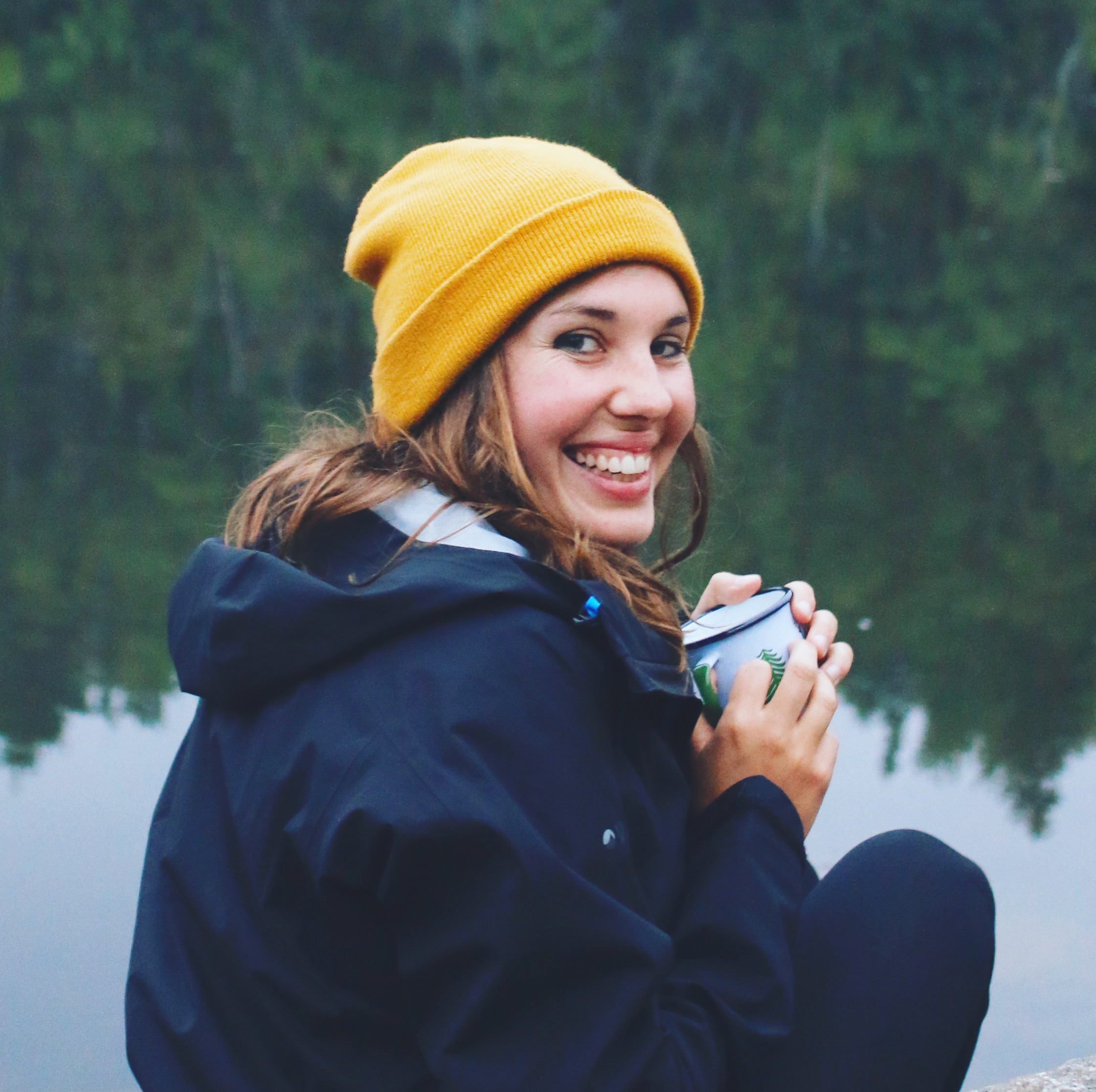Was there ever an area more suited to exploring on horseback than Dartmoor? Steeped in folklore and with ever-changing scenery, it’s impossible to tire of this wild terrain.
I took to the saddle for a 22-mile (35km) adventure with Liberty Trails, which specialises in long-distance rides across Dartmoor. Their beautiful, sure-footed quarter horses – a popular American breed of small, fast horses used for races and rodeos – are a delight to ride or horse owners can bring their own steeds for the excursion.
Elaine Michelle Prior, Liberty Trails’ founder, grew up exploring these moors on ponies and now organises small, tailor-made rides through the national park. Experienced riders can take on single- or multi-day tramps through the park’s wild places or explore War Horse territory with a tailored ride visiting locations from the movie. There’s even a chance to join the cattle drives in late spring.
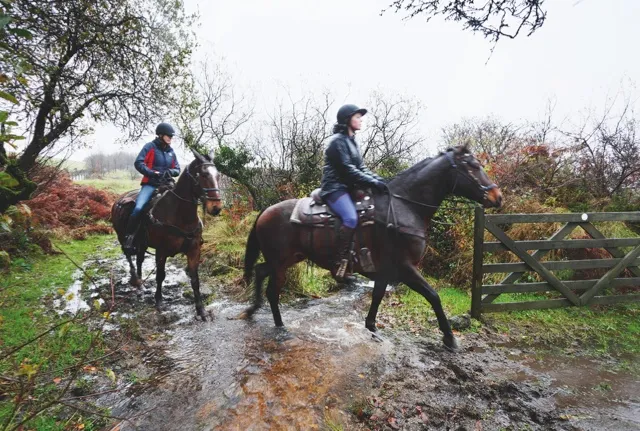
Untamed moorland
Long distance horse-riding is not for the unfit or the delicate of behind but it is an immensely rewarding way to immerse yourself in the landscape and explore off the beaten track. While six hours in the saddle was testing, I found that what is hard on the backside is good for the soul.
I got up bright and early to meet Fred, the glossy horse who would be my partner in adventure. Our guide was farmer Phil Heard, who knows the moors inside and out and can read the land effortlessly. He rode ahead to lead the way, kitted out in a Stetson and floor-length coat, like a Devonian version of the Marlboro man.
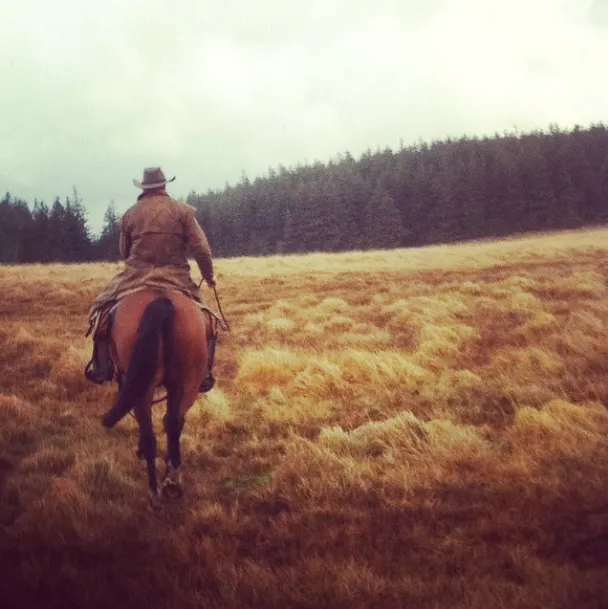
We set off from the old Meldon Quarry, now a tranquil pond nestled under a viaduct, and then cantered out onto the moor. Dartmoor is one of the few places in England that still feels wild and untamed, and as we rode along paths of exposed bedrock in the marshy ground known as peat passes and past herds of wild ponies, I had a lesson in the area’s history and folklore from Elaine.
Stopping at the lonely, windswept memorial to the airmen whose plane crashed here during the Second World War, we spotted the strange granite towers of Drogo Castle in the distance, then came upon eerie Whitehorse Hill. A prehistoric burial site was unearthed here in 2011 that furnished archaeologists with a treasure trove of textiles, flint knives and beautiful amber beads.
Phil guided us past boggy spots and over tufty heather, and we paused for a lunchtime picnic by my favourite Dartmoor pub, the Warren House Inn, where a peat fire has been burning since 1845.
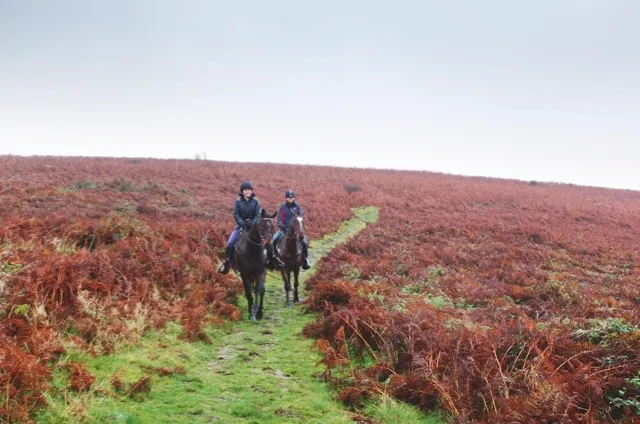
The landscape began to soften as we came upon Jay’s Grave, a landmark with a heartbreaking history. Here lies a young girl who killed herself centuries ago but, mysteriously, her grave is always covered in fresh flowers, and no one has ever seen who leaves them there.
We were on the home stretch as Dartmoor’s iconic stone tors appeared on the horizon. I love the stories of how some of them came to be. Legend has it that a hunter and his pack of dogs were turned to stone by a witch here. The huntsman, forever petrified, became Bowerman’s Nose, while his faithful dogs were turned into the scattered rocks found at Hound Tor.
After six hours in the saddle, the stables near Widecombe-in-the-Moor were a welcome sight. I was very fond of Fred by now, after he’d looked after me so well, and I had a chance to give him some love back by grooming him and getting him fed and bedded down.
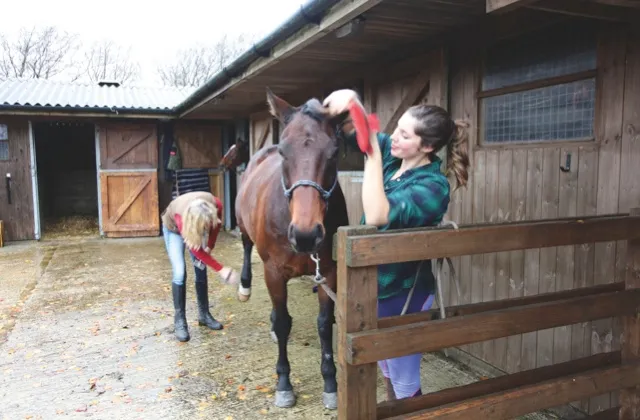
Then it was our turn to get warmed up, at the Arundell Arms Hotel in the little village of Lifton. A cosy sporting hotel that’s been run by the Fox-Edwards family for 50 years, this is the perfect place to rest weary bones after a day on horseback. The Arundell is a place that still offers a real old-world welcome, and their magical formula of hot bath, delicious, locally sourced food, a stint by the roaring fire in the sitting room followed by a comfy bed was the perfect tonic after a day riding the ranges of Devon’s hinterland.
